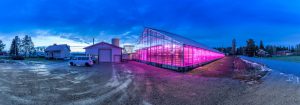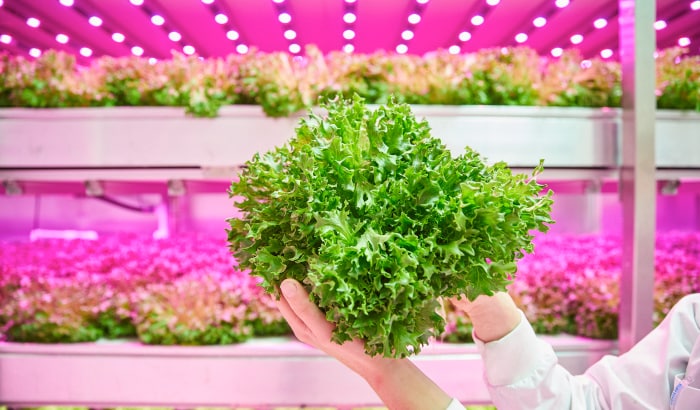- Lighting conditions applied just before harvest determine the final yield, percentage of dry matter and quality (shelf life and nutrient content) of the crop.
- Lettuce grown in a vertical farm can be just as nutrient-rich and fresh tasting as those grown in a greenhouse or outdoors
- Controlling the light towards the end of production can be applied in vertical farming as well as in a greenhouse to enhance different quality aspects in the product.
It’s a common problem with processed lettuce. After a few days in the fridge, the leaves wilt or turn brown. At Signify, we performed a study to see if increasing the intensity of LED grow lights a week before harvest would improve the quality and shelf life of lettuce. And the results show that high light intensities applied at the End of Production increase key nutritional elements and quality markers, and ultimately extend the shelf life of lettuce.
Leafy vegetables generally have a short post-harvest life due to physical damage and lack of light during storage and transportation. How long a leafy vegetable or any other vegetable lasts on the shelf and how long it looks and smells fresh are determined by the growing conditions of that vegetable. In academic research, scientists are establishing a link between nutrient content and shelf life. Key nutritional elements and quality markers include the levels of carbohydrates (glucose, fructose, sucrose, and starch) and vitamin C defined as the total ascorbic acid (TAsA). Both carbohydrates and TAsA levels are affected by light conditions.
In this study, our objective was to investigate the effect of light treatments applied before harvest on the post-harvest performance of lettuce, as a representative crop of leafy vegetables. Most of the previous research on the effects of light intensity on product quality has been done by applying different light levels during the entire cultivation period. In our experiments, we applied different light levels only at the End of Production – 6 or 7 days before harvest. The advantage is that the light treatments will only have limited influence on other aspects of the crop, such as growth, yield and morphology. And it also minimizes energy usage.











